Table of Content
- 10 steps for best results with Helium / IoT antenna setup
- Connector Type
- What antenna/cable connector should be chosen to connect the M1/M2 hotspot?
- How do I get a high-quality fiberglass antenna?
- What does Antenna Gain/dBi Mean?
- How to choose the Antenna Gain/dBi?
- Will the cable length affect the antenna gain?
- What is an "Isotropic Radiator"?
10 steps for best results with Helium / IoT antenna setup
We highly recommend you visit the article “10 steps for best results with Helium / IoT antenna setup” provided by RF Explorer to learn more about the antenna practice.
Connector Type

What antenna/cable connector should be chosen to connect the M1/M2 hotspot?
The SenseCAP M1 and SenseCAP M2 are with RP-SMA Female connectors, which means you need to connect the hotspot with an RP-SMA Male connector antenna or cable.
Fiberglass antennas sold on Seeed Studio online store are with N-Type Male connectors. To connect such a fiberglass antenna to SenseCAP M1/M2 hotspot, you will need an RP-SMA Male to N-Female extended cable.
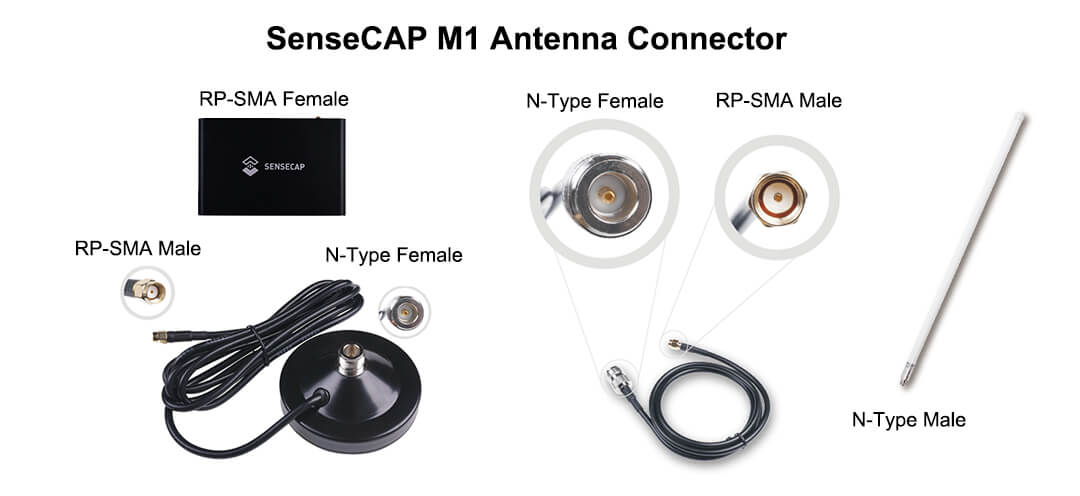
How do I get a high-quality fiberglass antenna?
There are Fiberglass antennas sold on Seeed Studio’s online store. When purchasing antennas, please ensure you also select the correct frequency.
Also, SenseCAP has partnered with RF Explorer to provide high-performance antenna and cable accessories to the community. It is highly recommended to visit https://lora.rf-explorer.com/ to learn more about antenna and cable guide.
What does Antenna Gain/dBi Mean?
In electromagnetics, an antenna’s power gain or simply gain is a key performance number that combines the antenna’s directivity and electrical efficiency. The expression dBi is used to define the gain of an antenna system relative to an isotropic radiator at radio frequencies. The symbol is an abbreviation for “decibels relative to isotropic.” In a transmitting antenna, the gain describes how well the antenna converts input power into radio waves headed in a specified direction.
Antenna gain is the same during receive and transmits modes. For example, if the antenna gain is +3 dBi in the direction that the signal is received, the received signal power is 3 dB stronger compared to an omnidirectional antenna.
How to choose the Antenna Gain/dBi?
Typically a higher dBi antenna does not always mean further/more coverage to earn more rewards. You will need to truly take a look at your surroundings and nearby Hotspots to determine the correct dBi.
- Higher dBi antennas are more narrow and pass coverage to longer distances. (flat terrain/low Hotspot density).
- Medium DBI antennas provide a bit wider coverage than higher, ones but also don’t reach as far. (consider this the middle of the two)
- Lower dBI antennas provide more uniform AKA round coverage to a certain degree. (uneven terrain/surroundings with high Hotspot density)
NOTE: It is essential to have proper antenna placement. Ensure your antenna is not blocked by concrete walls, stucco, massive buildings, or dense trees/surroundings. If you can, consider moving your antenna outdoors such as mounting it to a roof with a clear line of sight if your results are not feasible indoors.
Moving the antenna outside and higher can potentially result in higher earnings. Again, each Hotspot location is different, please do your own research before proceeding.
Please visit the Helium Tools page for resources on Hotspot placement and RF coverage areas. There are many resources to help you make the best choice.
We’ve included a detailed video below from a fellow community member.
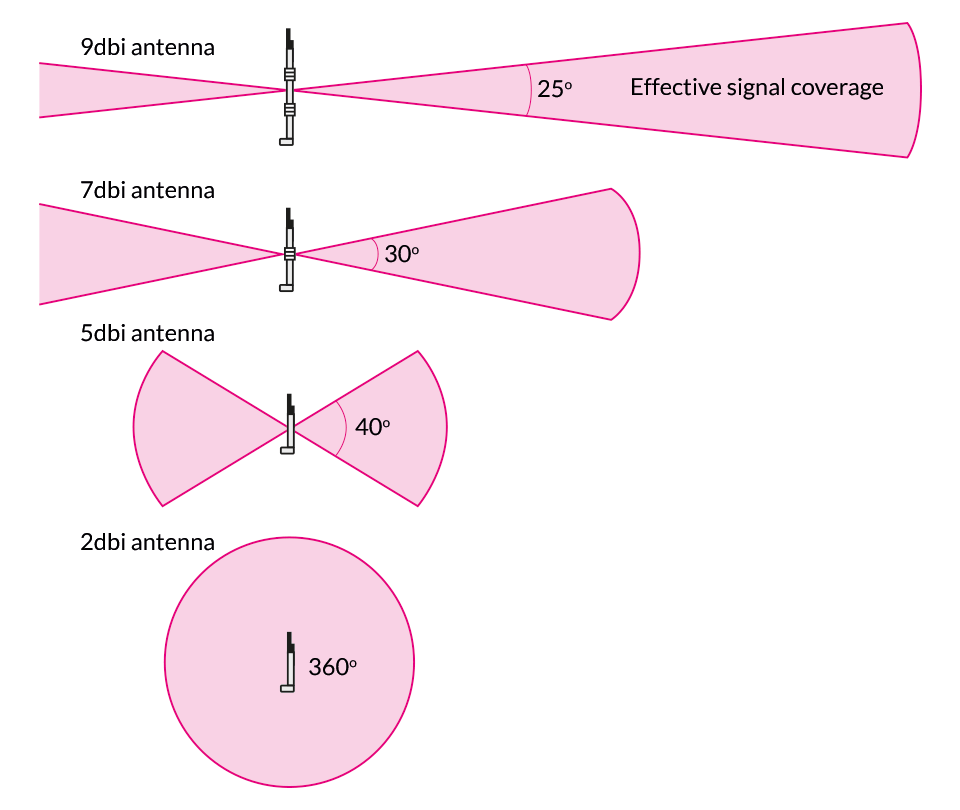
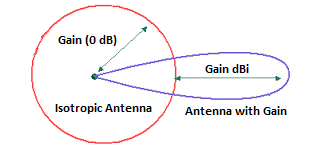
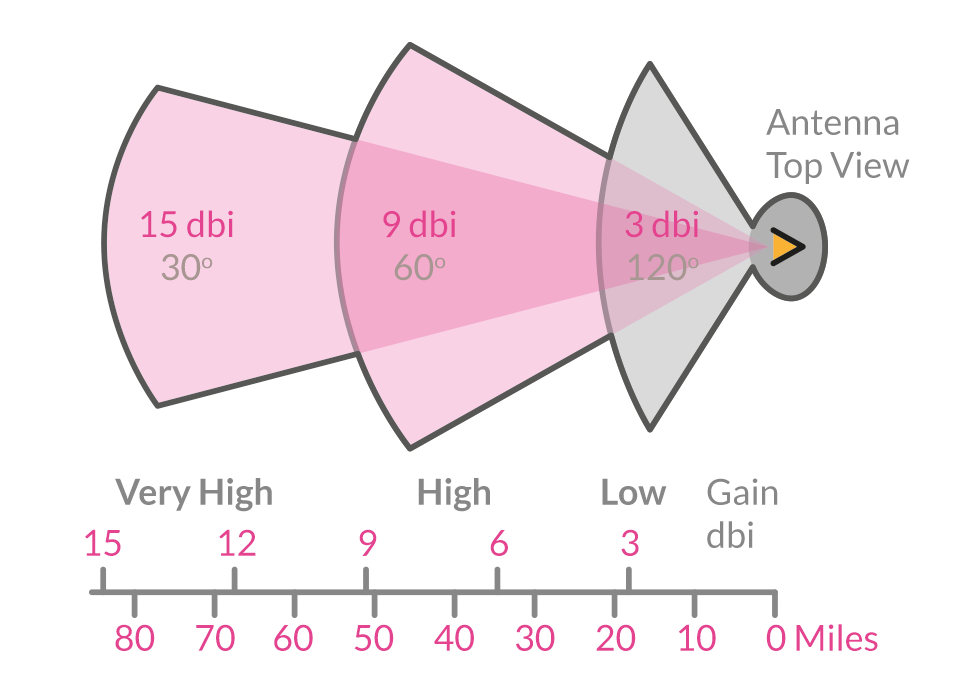
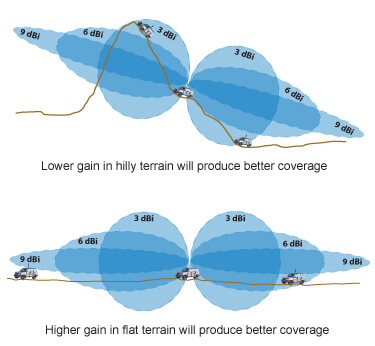
Will the cable length affect the antenna gain?
Please take note that the longer the cable, the more signal loss you will experience. Every Hotspot’s situation is unique, there really is no one answer fit’s all.
Antenna cables generate signal loss; the more signal loss, the more difficult it is for your Hotspot to witness other signals/Hotspots around you. To further understand this, imagine yelling down a hallway. The closer you are to the front of the hallway, the louder the people will hear you. The further you are from the hallway front, the lower they will hear you.
The goal here is to minimize the amount of loss coming from the antenna to the Hotspot. In order to achieve the best results, you want a heavy-duty and short (ideally around 5-10′ or less) cable that goes from your Hotspot to your antenna.
Running cheaper cables (thin with no shielding) can create loss, which will reduce the power and strength/transmission of your antenna. Also, please take note that running a 30-50′ cable will also reduce the strength of your antenna as now you will have to calculate cable loss.
The best practice is anything shorter than ~2 meters = LMR 200/240, anything to ~6 meters = LMR 400, and anything beyond that with LMR 600.
Please use the following Signal Loss Guide to determine your final signal loss/ft.
What is an “Isotropic Radiator”?
In general, an isotropic radiator is a hypothetical or fictitious radiator. The isotropic radiator is defined as a radiator that radiates energy in all directions uniformly. It is also called an isotropic source. As it radiates uniformly in all directions, it is also called an omnidirectional radiator or unipolar. Basically, an isotropic radiator is a lossless ideal radiator or antenna.

